In the woods behind the Wilton Playshop, I could see the traditional galvanized sap pails hanging on the tapped sugar maples. Sugaring season was underway!
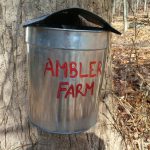 Marked Ambler Farm, the buckets were a continuation of a centuries-old tradition of New England maple sugaring. In mid-winter sugar maple sap begins to flow from the roots up the tree, rising on warm days and halting when the cold returns. Generations of farmers and woodsmen have collected the sap and boiled it down to create maple syrup.
Marked Ambler Farm, the buckets were a continuation of a centuries-old tradition of New England maple sugaring. In mid-winter sugar maple sap begins to flow from the roots up the tree, rising on warm days and halting when the cold returns. Generations of farmers and woodsmen have collected the sap and boiled it down to create maple syrup.
Kevin Meehan, maestro of sugaring at Ambler Farm, told me that the sugarbush behind the playhouse with 170 taps is one of their most productive. (In the sugaring trade, a stretch of forest that’s good for sap collection is called a sugarbush.) The farm, a Wilton public park, collects sap from across the town with the help of volunteers.
Maple sugaring season always takes me by surprise. While I’m still wondering how many more times the driveway will need to be plowed, the sap starts to flow. Sugarmakers are tapping trees and hanging their buckets in anticipation of the alternating warm and cold days that will get the sap flowing.
In larger operations, the sap is collected with tubes that connect the trees to a central collection point, eliminating the intensive labor of regularly emptying each bucket. It takes away some of the romance, but keeps the industry competitive.
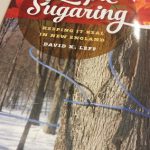 David Leff, an essayist, poet, and former Deputy Commissioner of the Connecticut Department of Environmental Protection has written a delightful book on the sugaring tradition. “Maple Sugaring: Keeping it Real in New England” tells the stories of current and past sugarmakers. An amature sugarmaker himself, Leff relates his tales with an obvious affection for the process, the people, and the experience.
David Leff, an essayist, poet, and former Deputy Commissioner of the Connecticut Department of Environmental Protection has written a delightful book on the sugaring tradition. “Maple Sugaring: Keeping it Real in New England” tells the stories of current and past sugarmakers. An amature sugarmaker himself, Leff relates his tales with an obvious affection for the process, the people, and the experience.
Most sugarmakers are in it for a love of the work, a strong connection with the land, and an opportunity to pull together with friends and family. Whether small operations with a few dozen taps or large scale commercial endeavors with more that 100,000 taps, they’re almost all family businesses. With multiple generations pitching in, the traditions are handed down the family tree, creating a bond around the steaming evaporator.
Leff tells of Noel Perrin whose book “Amature Sugar Maker” was originally published in the New Yorker; Erica Andrews who moved back to the land seeking an “organic lifestyle” and sugars in Scotland, CT; Lyle Merrifield who sugars in Maine; and Mike Girard who taps a sugarbush that has been in production for over a century, along with many others. These folks all talk about an experience beyond the business of making and selling maple syrup. They’re close to the land and the rhythms of nature, working within a community of family, neighbors, and fellow sugarmakers.
They’re all pretty good talkers, too. Once the sap is collected, it’s boiled to evaporate water and increase the sugar percentage. It can take 35 to 40 gallons of sap to make one gallon of syrup. That’s a lot of sitting around feeding the arch (stoking the fire) and tending the evaporator. It becomes a social experience. Sugar houses in the late winter are rural gathering places to catch up, swap stories, talk about the weather, and gossip a little. The sociability of the sugar house is a common thread in Leff’s tales.
I visited Ambler Farm to see the sugarhouse in action. The aroma of wood smoke and the plume of rising steam marked the spot. Kevin was there along with Wilton High volunteers Linsey and Emma who were staffing the evaporator. Families came and went, some bringing buckets of sap, others there to learn about sugaring on a slushy, thawing afternoon that was good for sap production.
The wood-fired Leader brand evaporator runs all day, burning wood harvested on the farm. Just like any other farm product, weather, growing conditions, and rainfall all impact the quality and quantity of the sap. The sap right from the tree is clear with a refreshing, slightly sweet flavor. The amber color and maple flavor of the final product is a result of caramelisation and concentration of flavors during the boil.
Syrup is graded by color – the darker the color, the stronger the flavor. Lightly colored, more subtly flavored syrup is made earlier in the season; darker, more robust flavored syrup is made closer to spring. All the grades are made by the same process. The four categories of Grade A syrup are: Golden, Amber, Dark Color, and Very Dark Color.
Maple syrup is usually poured over pancakes or waffles. (If you’re eating out, be sure to ask for the real thing.) But maple syrup should have a larger role in everyday cooking. Thomas Jefferson promoted it as a locally-made alternative sweetener to cane sugar. Leff includes a few recipes contributed by his sugaring friends after each chapter. I was particularly taken with Shirley Hewlett’s Maple Syrup Muffins.
Ambler Farm, 257 Hurlbutt Street, is holding an open house on Saturday, March 11 from 1:00 to 2:00. All are welcome to learn about sugaring methods, have a sugarhouse experience, and purchase a bottle of Ambler Farm syrup. You can’t get any more seasonal than that!







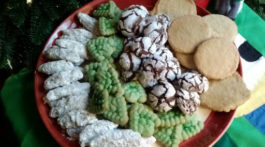
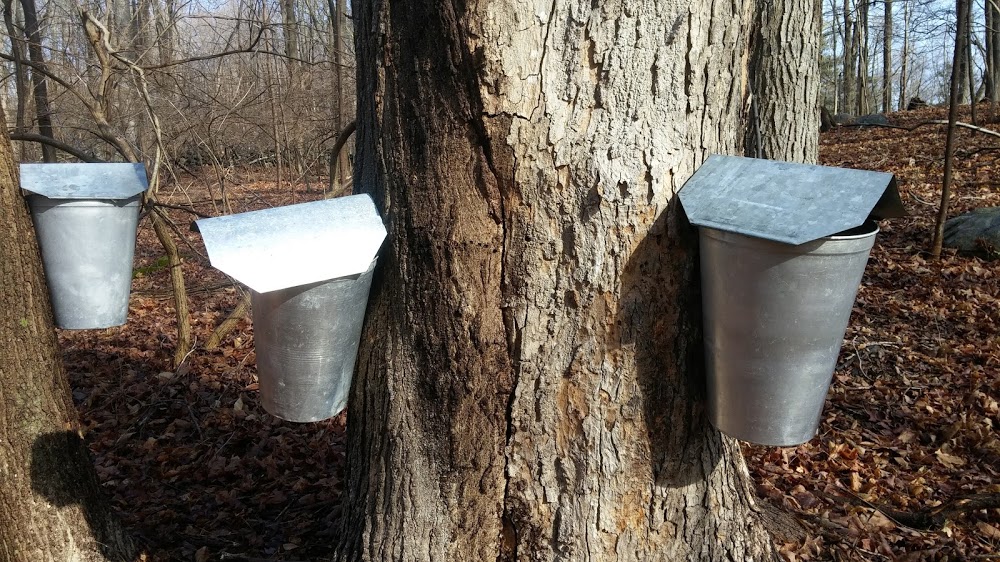


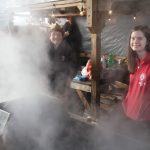

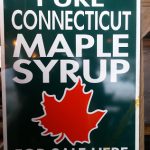
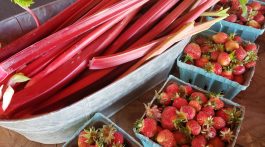

No Comment